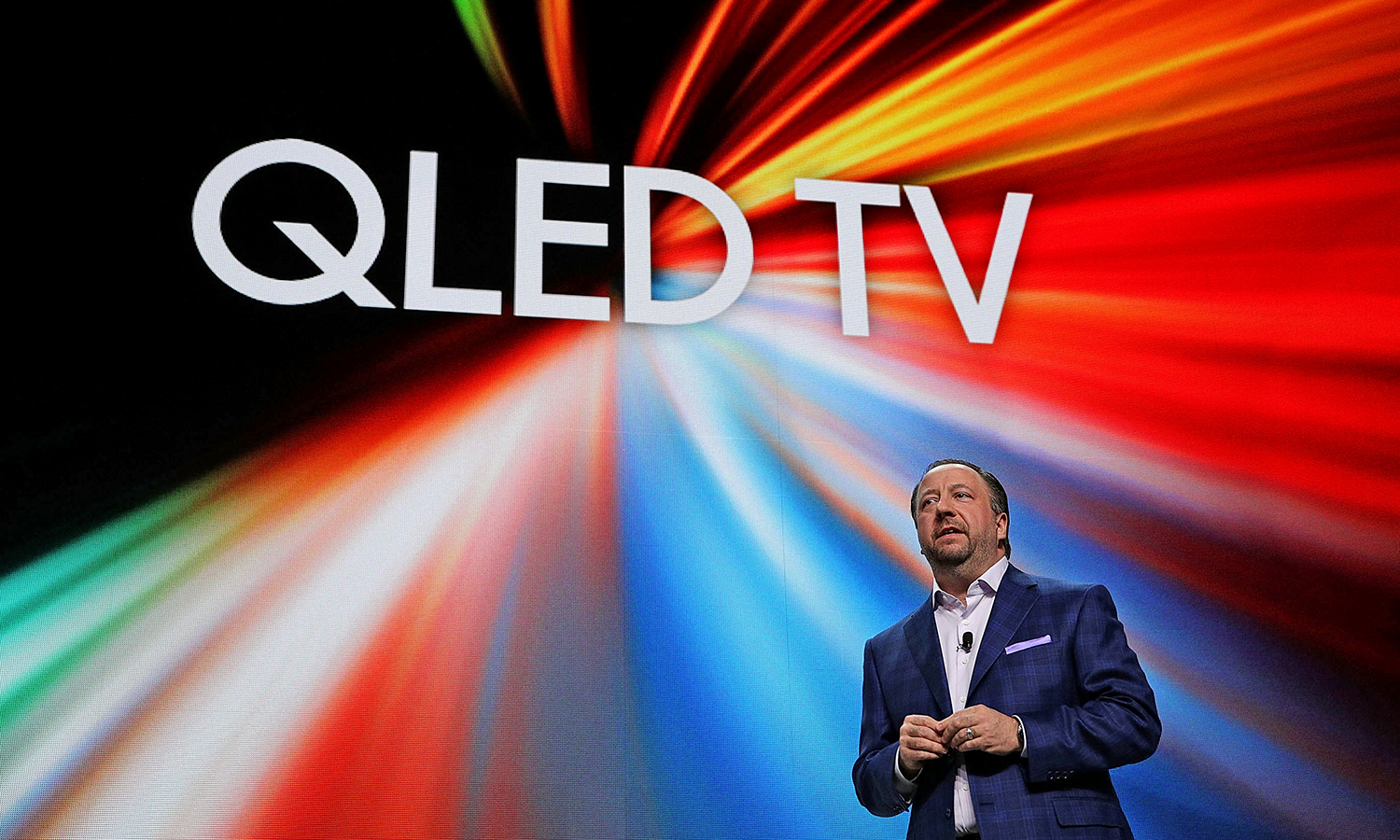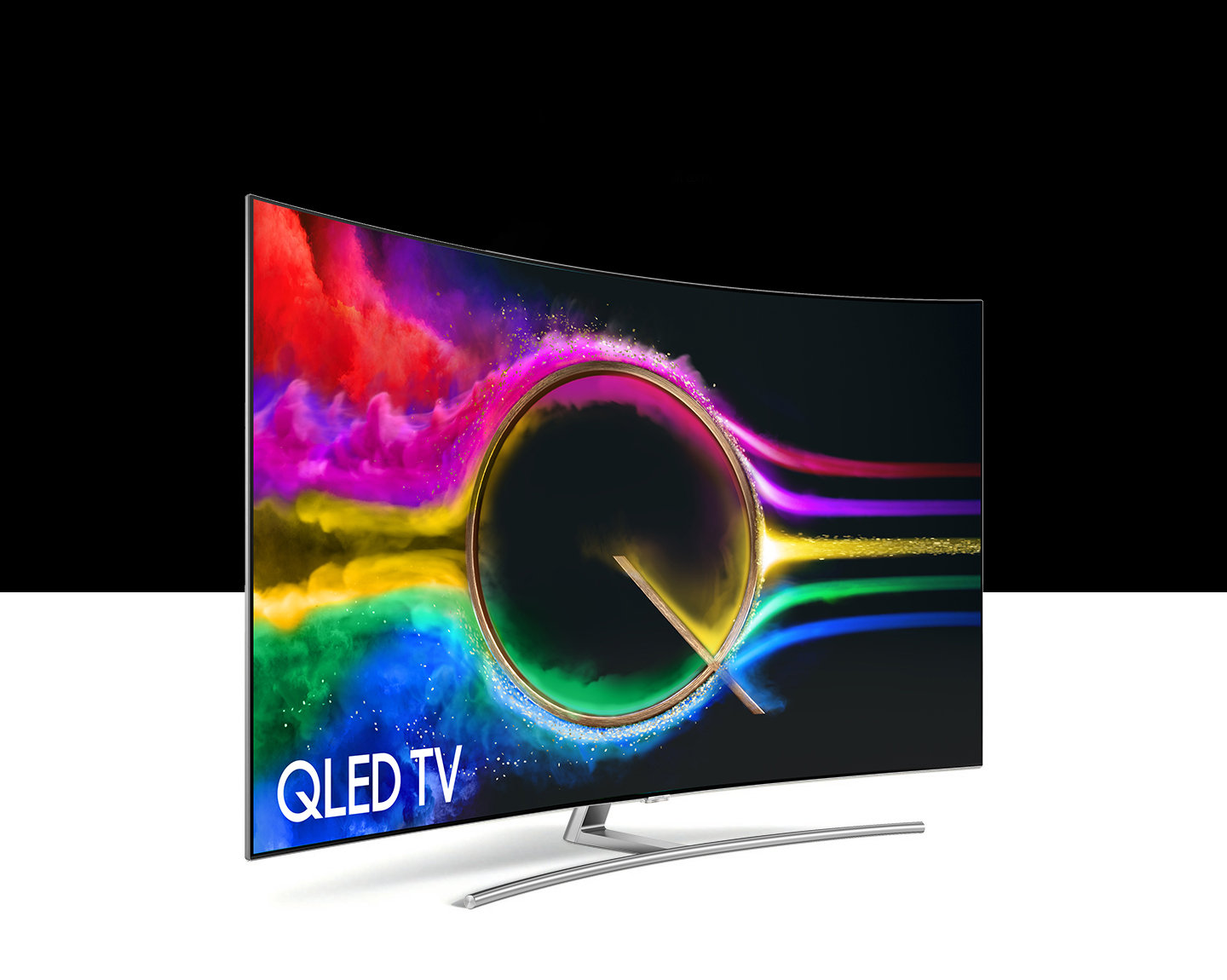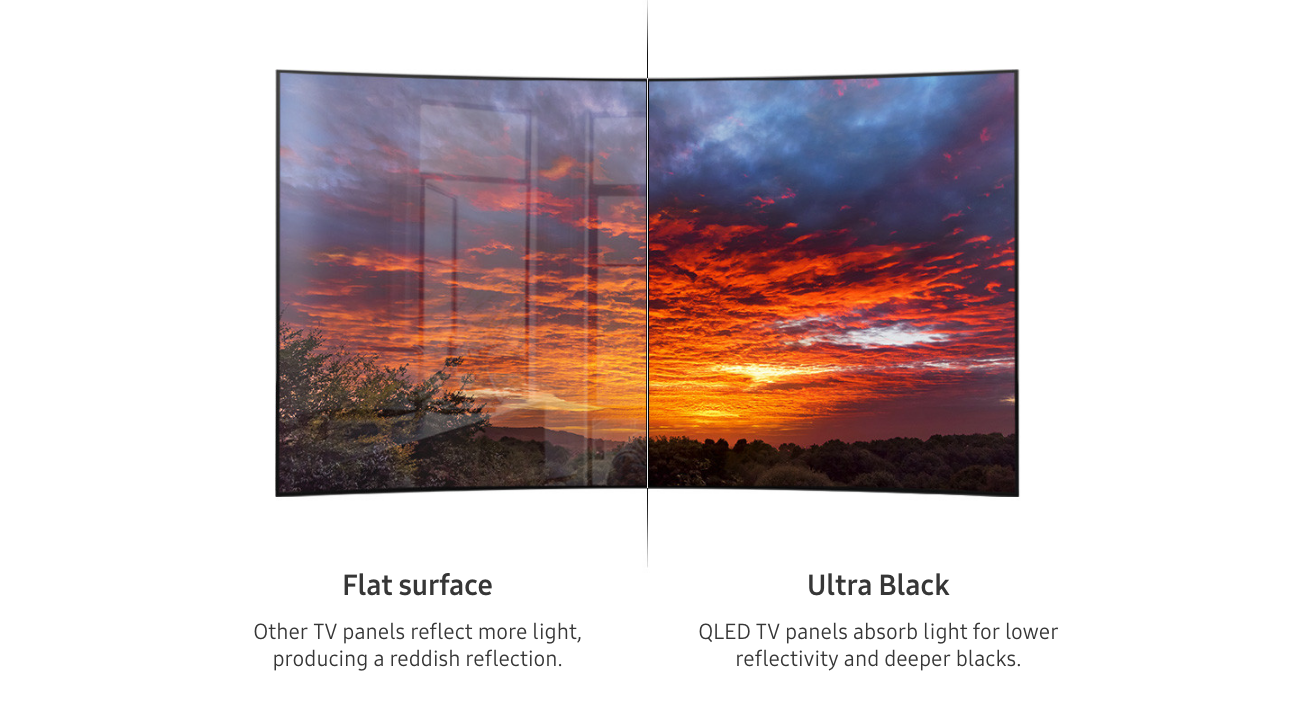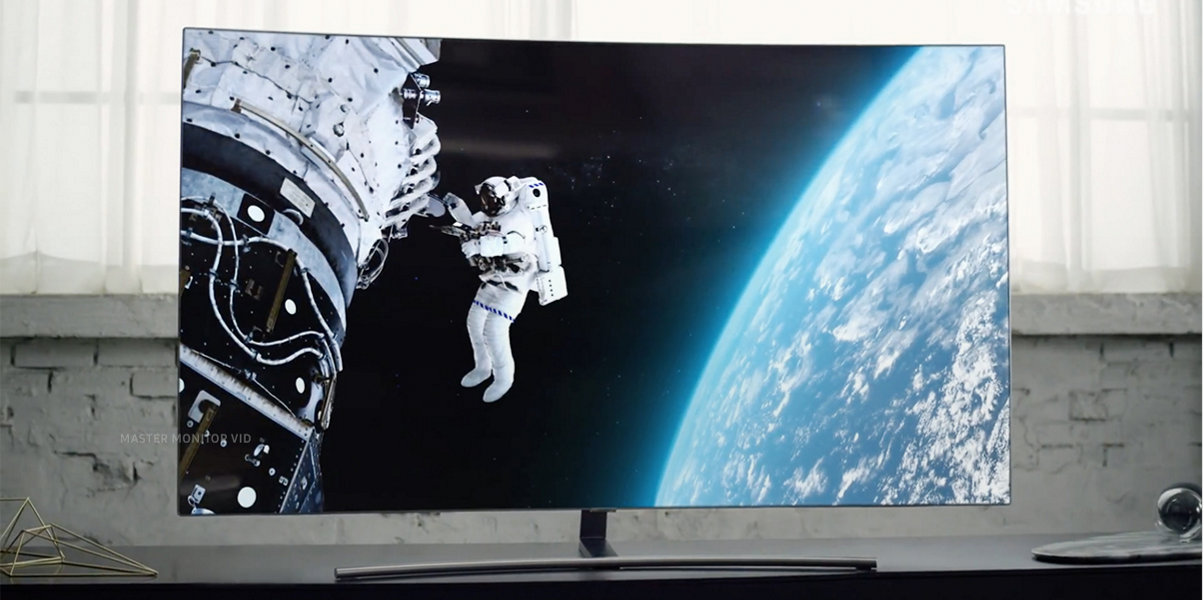What Are QLED TVs? Samsung's New Screen Technology Explained
Samsung's QLED TVs promise a superior picture for a premium price. Here's what you get for the money and how they compare with OLED sets.
In a world where OLED, LCD, HDR and a slew of other acronyms are all vying for your attention, more abbreviations just add to the confusing alphabet soup. But Samsung hopes its new screen technology, called QLED, will stand out.

Today's best TVs deliver outstanding resolution, vibrant hues and superior contrast compared with sets from just a few years ago. But QLED attempts to dramatically improve upon your existing set with high color volume, ultrawide viewing angles and more.
At CES 2017, Samsung unveiled its first QLED TVs. And now, some of those sets are making their way to store shelves. But considering Samsung's QLED TVs cost thousands of dollars, you'll want to know what you're getting into before buying one.
We've got you covered. Here's a look at what QLED technology is, what it does and how it compares to OLED.
Editor's Note: Due to an error, John R. Quain's byline was incorrectly placed on the original article. It was actually written by Don Reisinger.
What is QLED?
OK, this is where things get a bit tricky. Samsung's QLED moniker doesn't really mean much. In fact, if a TV is said to incorporate Samsung's television QLED technology, it means only that it's an LED set that uses quantum dots to boost its picture quality. In other words,, the technology is not a new, stand-alone alternative to OLED or LCD, but rather an enhancement to traditional LED technology.

In short, Samsung has been working on quantum-dot technology and LED technology for years, and the company has melded the two in its QLED sets to deliver what it says is a superior picture.
Get instant access to breaking news, the hottest reviews, great deals and helpful tips.
MORE: Best 4K TVs - Ultra High Definition (UHD) Televisions
How does QLED work?
QLED is supposed to be a so-called emissive technology. In other words, behind your television screen, a proper QLED setup would have a quantum-dot light-emitting diode array that wouldn't require another source of light. The quantum dots would produce their own light, and would turn on and off based on what's on the picture. Some screen experts say the result would be an outstanding picture.

Samsung's QLED TVs come close, but don't quite reach, that milestone. Instead, Samsung's sets spread quantum dots in an array across critical places around the display (for example, the middle and other areas where you want the very best detail). Behind those quantum dots sits a light source — in this case, LED lights — that beams the picture out to you. However, because the light is beaming from behind, it actually washes over the quantum dots, which work to deliver a more vibrant and accurate picture.
Quantum dots, in other words, help to enhance the results from LED lights. But a proper QLED wouldn't even need the LEDs in the first place.
What are quantum dots?
Quantum dots are really, really tiny particles that, when hit with light, can deliver extremely high-intensity light. So, for instance, if light from an LED hits a quantum-dot particle that emits red light, chances are, that red light will be as vibrant and rich in color as anything you've seen. The same goes for blues and greens.
Just how small are quantum dots? A smaller quantum dot ranges from 2 to 3 nanometers, and a quantum dot is considered big when its radius is about 5 to 6 nanometers.(A nanometer is one-billionth of a meter. For comparison, a human hair is roughly 100,000 nanometers thick.)
Arguably, quantum dots' best feature is their ability to be finely tuned to deliver outstanding picture quality. With simple tweaks, TV makers such as Samsung can enhance the way quantum dots show color, thus creating what some experts say is a visual experience vastly superior to that provided by most other technologies.
MORE: Best Soundbars - Better TV Sound in a Small Package
Where can I find QLED TVs, and how much do they cost?
For now, QLED technology isn't very easy to find. In fact, it's making its biggest splash yet in Samsung's new Q line of televisions. All of those televisions come with QLED technology, but pricing varies based on their design, picture quality and other features.
Here's a list of Samsung QLED televisions and their associated prices:
- Samsung Q9F (65 inches): $6,000
- Samsung Q8C (55 inches): $3,500
- Samsung Q7C (55 inches): $2,800
- Samsung Q7F (55 inches): $2,600
The biggest advantage the Q9F has over Samsung's other QLED TVs is its included One Connect box, which enables you to connect your cable box, Blu-ray box and other devices to the set with a single cable.
You can buy these televisions from Samsung's site, big-box technology stores such as Best Buy, or online at Amazon and other retailers.
How does QLED compare to OLED?
In the world of high-end televisions, QLED is in direct competition with OLED. And that means Samsung and its QLED technology is in direct competition with LG and its OLED TVs. Sony also makes OLED TVs using LG's panels.
Naturally, if you ask the companies which technology is best, they'll say the one they're investing in, and indeed, each has certain benefits.
QLED sets benefit from better brightness levels than OLED. LEDs can get really bright, allowing the whites on your picture to pop. And whenever you see color on a QLED set, you'll typically find it in its most vibrant, but still accurate, depiction.
QLED supporters also tend to noted the technology's advantage on so-called burn-in. Burn-in refers to the possibility of leaving a static image on your screen for too long and artifacts remaining on the display after you turn it off. QLED supporters say it's nearly impossible to burn-in an image on a QLED set. And that, they say, stands in contrast to OLED, which is susceptible to burn-in.
MORE: 30 Best Netflix Movies to Stream Now
And because QLEDs use LED technology, they can typically span much larger sizes than today's OLED screens. But whether that matters to the average person who would be happy with a 65-inch set is up for debate.
On the other hand, OLED is better than QLED in some ways. For instance, OLED is a fully emissive technology, which means the organic LEDs create light on their own without requiring another light source. All OLEDs need is electricity, and they light right up.

In addition, a TV that does not require another backlight can have a thinner screen than you might find on a QLED set. That idea was evident at CES earlier this year, when LG announced its W7, an OLED set that looks like it was painted on the wall.
It's also important to note that OLEDs, like QLEDs, can deliver outstanding color accuracy. But you'll also find that OLED TVs have what's called "infinite" contrast levels. That's because, when a picture calls for black, single OLEDs around the screen turn off, creating a true black. Other screen technologies need to manufacture black by reducing light emission.

OLEDs deliver a bit more flexibility than QLEDs, which makes OLED a desirable technology for different device types. Lastly, reviewers have said that OLED TVs offer wider viewing angles.
Still, like QLED, OLED technology can be somewhat difficult to produce. And at least right now, both technologies are quite expensive.
What should I expect from a QLED picture?
Like any other screen technology, you'll find some advantages and disadvantages with QLED.
On the plus side, LEDs can get extremely bright. And when they shine their lights on quantum dots, the particles intensify the light, creating exceedingly vibrant colors. If you like bright and bold colors, QLED is for you.

However, the black levels aren't perfect. Unlike OLEDs, which completely turn off to create blacks, QLED TVs rely on LED backlights. So, though the LEDs will dim to create a black, dimming is not the same as turning off. There's a good chance, then, that your blacks will not be as deep as they would be on an OLED, and you might find some light coming through.
Additionally, Samsung's use of both LEDs and a quantum-dot panel means your television will be a bit thicker than comparable OLEDs.
If you're worried about cost, you should know that QLED pricing is similar to that of OLED sets. For instance, a high-end LG OLED TV, the OLED65G7P, will set you back $6,500. A similarly equipped QLED from Samsung, the Q9F, costs $6,000. Depending on your budget, you can get a nice OLED from LG for around $2,000. The same is true for Samsung's lower-end QLEDs.
MORE: Cable TV Alternatives - A Guide to Cutting the Cord
Should I buy a QLED TV?
Well, we need to ask you some questions to answer this one.
First, do you mind paying thousands of dollars for a television? If so, Samsung's QLED televisions are not for you. If you want to spend less than $1,000 or $2,000 on a QLED set, you'll have to wait at least a year until prices start to come down.
Second, you need to determine what you really want from your television. Do you want it to have deeper blacks? If so, choose OLED. Do you care about your television's thickness? If so, QLED might not be the best option. If you want outstanding color representation, though, QLED will deliver.
Ultimately, you'll probably be impressed by a QLED television's picture quality. And unless you have a state-of-the-art OLED at home, there's a good chance your QLED will deliver better picture quality than your older set.
In other words, you won't get burned if you choose QLED.
Don Reisinger is CEO and founder of D2 Tech Agency. A communications strategist, consultant, and copywriter, Don has also written for many leading technology and business publications including CNET, Fortune Magazine, The New York Times, Forbes, Computerworld, Digital Trends, TechCrunch and Slashgear. He has also written for Tom's Guide for many years, contributing hundreds of articles on everything from phones to games to streaming and smart home.
-
Rikb The article was too non-committal with the results. The OLED gives a better experience because of the infinite contrast, not because of the total black level. The infinite contrast also works with all the colors including one missed point. The OLED technology also includes a white pixel and this makes a HUGE improvement in the overall image quality compared to the extended passive technology of the QLED.Reply
Also, the added brightness of the QLEDs is overkill when watching in a normal living room, especially at night and most viewers will need to turn the brightness down for a more appealing and non-cartoonish image. If your viewing location is full sun brightness, then QLED may be a better choice for maybe a patio or pool location where bright uncontrollable light is an issue. But indoors where you can control the light levels, the ultimate image is OLED even in a fully lamp lit room. With the price being so similar, the difference in $6000 to $6500 is minimal to get a real State of the Art display. -
gigabob Is Samsung hiring Spicer to write QLED copy? At $1K more than OLED's for a given size, inability to go total black QLED's look worse and cost more. I have been a TV aficionado for some time, have grown to prefer Samsung - while I wait for a Lotto win to afford an OLED. Now here comes QLED series, a step down from the KS series it replaces and $1K more than LG's OLED's. For my money I would go out and buy 65" KS8500 or 8K's for $1200 before the last of the inventories are gone. Hey that's what I actually did. What a bargain. QLED is not.Reply -
Dave Haynie This article doesn't begin to correctly explain the usual technology for quantum dot LCD displays, or if there's actually anything different about Samsung's version, now that they're calling it QLED rather than the previous names. Samsung called them Nanocrystal displays when they first came out, then Quantum Dot, and now QLED, but it's all essentially refinements of the same thing.Reply
The regular LED-backlit LCD displays use a white LED backlight. Of course, there isn't any actual white LED, so these are often blue LEDs with a yellow phosphor. That delivers white, more or less, but it's not as wide spectrum as you'd get from most other light sources.
Quantum dots are intersting because they have artificial band gaps -- the constrained size of the particle accurately defines the band gap, and thus, the light that they'll emit when excited by some other source of energy. In the case of QD-LED displays of all kinds, they use a blue LED as a backlight (you need a higher energy source to excite the quantum dot), then precisely calibrated red and green quantum dots, which work together to deliver a wide spectrum, pure white backlight.
Certainly other things could be done with quantum dots and displays, but no one's building an all-LED display after the fashion of OLED, one LED per subpixel, as the name implies. That's in the lab today perhaps, not at Best Buy. The stated improvements for the 2017 Samsungs in the display itself is a brighter backlight and some tweaks to the quantum dot material.
